Mtg Things That Both Blue and Black Do
Quick Links
- What Are Allied And Enemy Pairs?
- White and Blue
- Blue and Black
- Black and Red
- Red and Green
- Green and White
- White and Black
- Blue and Red
- Black and Green
- Red and White
- Green and Blue
While each of Magic the Gathering's five colours have their own philosophies, themes, and design spaces, almost every set also combines them into colour pairs. When two colours meet, they can become radically different from what they represented before, either supported or contrasted by their partner colour.
This guide assumes you have read our guide to the philosophy of the five individual colours, but understanding what each of the game's ten colour pairs stands for can improve your understanding of the game just as much as each colour in isolation. Colour pairs have their own strategies and limitations, and knowing what you like to play can help hone down which colour pairs you should look into when building your deck. Here's everything you need to know about the philosophy of Magic's colour pairs.
What Are Allied And Enemy Pairs?
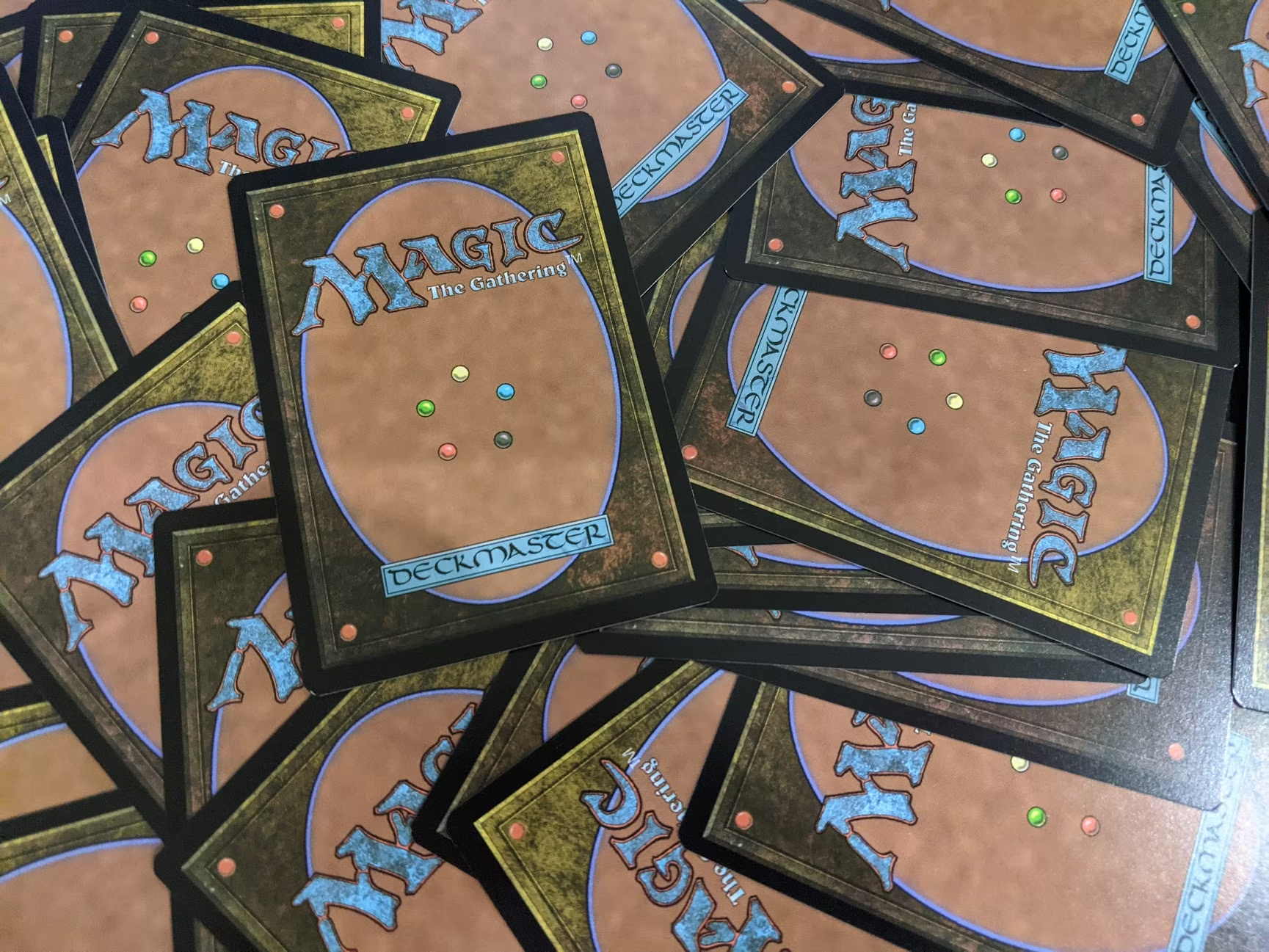
Before getting to the colours themselves, you need to know the difference between an "allied" and an "enemy" pair.
On the back of every single Magic card, the five colours are set out in a circle. The order of these colours isn't random: colours next to each other are "allied", and share certain thematic elements, while those opposite to each other contrast and conflict with each other, and so are called "enemy" pairs.
For example, white and green both care about supporting communities and so are allies. On the other hand, black's selfishness is directly opposed to white's collectivism, which makes them enemies. In terms of design, allied colour pairs tend to reinforce what makes each colour powerful, while enemy pairs help offset their weaknesses.
White and Blue
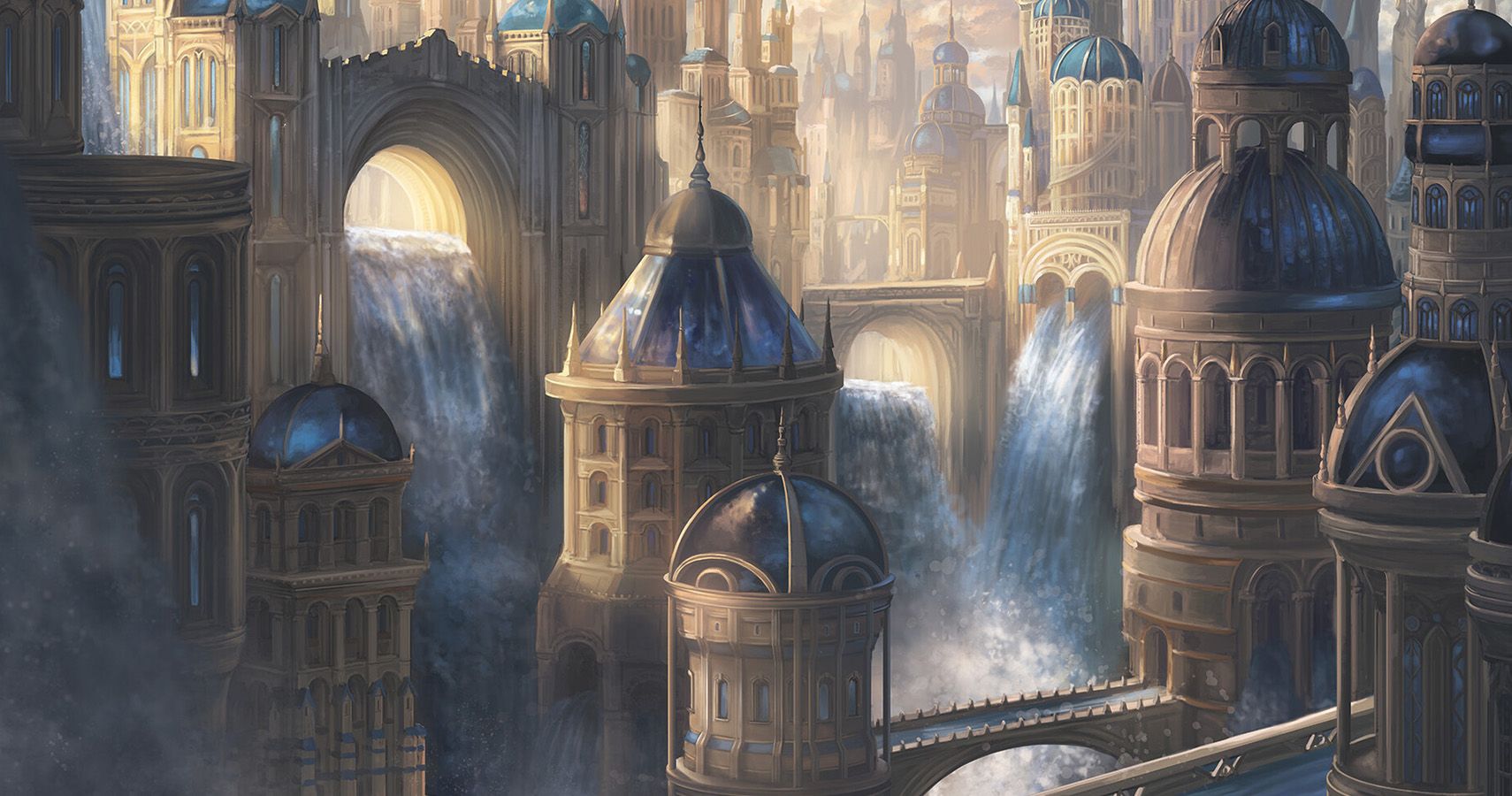
The first of the five allied colour pairs are white and blue. In Ravnica, the white and blue guild is the Azorius Senate, while on Tarkir it represents the dragon clan Ojutai. In Kaldheim and on Innistrad, white and blue are left for the spirits who linger on after death.
When put together, white's focus on community and peace often combines with blue's endless search for knowledge and perfection. The Azorius serve Ravnica as its judges, politicians and lawmakers as they try to make a perfect and unbreakable legal system. The great dragon Ojutai is seen as a teacher, dispensing wisdom to his followers. In the game, this makes white and blue one of the best colour pairs for control, as it combines white's heavy 'pillow fort' cards like Norn's Annex and Ghostly Prison with blue's counterspells and permanent bouncing.
However, what both white and blue can lack is a 'moral good'. It seeks a perfect society, but this can come at a cost for those who don't conform to its ideals. The spirits of Innistrad are stuck to the plane through unfinished business, and those in Kaldheim didn't die valiantly enough in battle. Ojutai is spiteful, the Azorius are overly bureaucratic.
Blue and Black
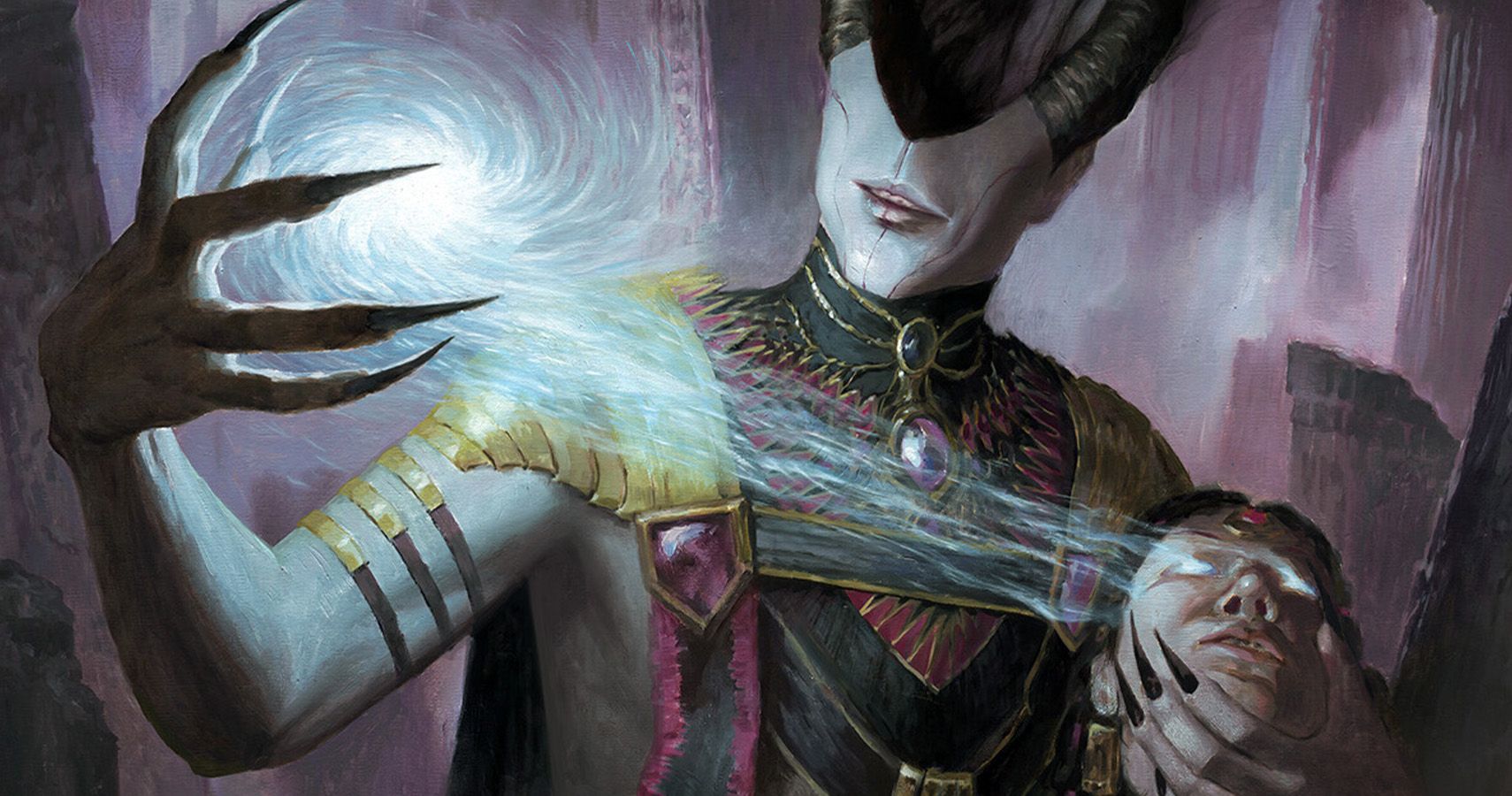
When blue's thirst for knowledge meets black's self-centeredness, the result is a tendency to use knowledge as a weapon. Ravnica's House Dimir is a guild of information brokers, spies, and assassins who keep their greatest secrets from even their own members. In Innistrad, blue and black are the colour of the Skaabren, scientists who stitch together and reanimate corpses just because they can.
Blue and black want to know everything, regardless of the cost, but this can often warp into paranoia and greed. The Tarkir dragon Silumgar will readily kill anything that threatens his horde of wealth, even if it means killing more of his already few followers.
Mechanically, blue and black tend to be graveyard-matters decks. Black's hand destruction tools and blue's milling (putting from the deck straight into the graveyard) can make them potent decks for simply removing a problem from the game before it's even appeared.
It's also the colour of rogues and ninjas, who use stealth and trickery to slip past the enemy's defences. Not only does dimir have the most flat-out unblockable creatures, the two colours also have a huge number of evasive abilities between them with flying, menace, fear, and deathtouch in its arsenal.
Black and Red
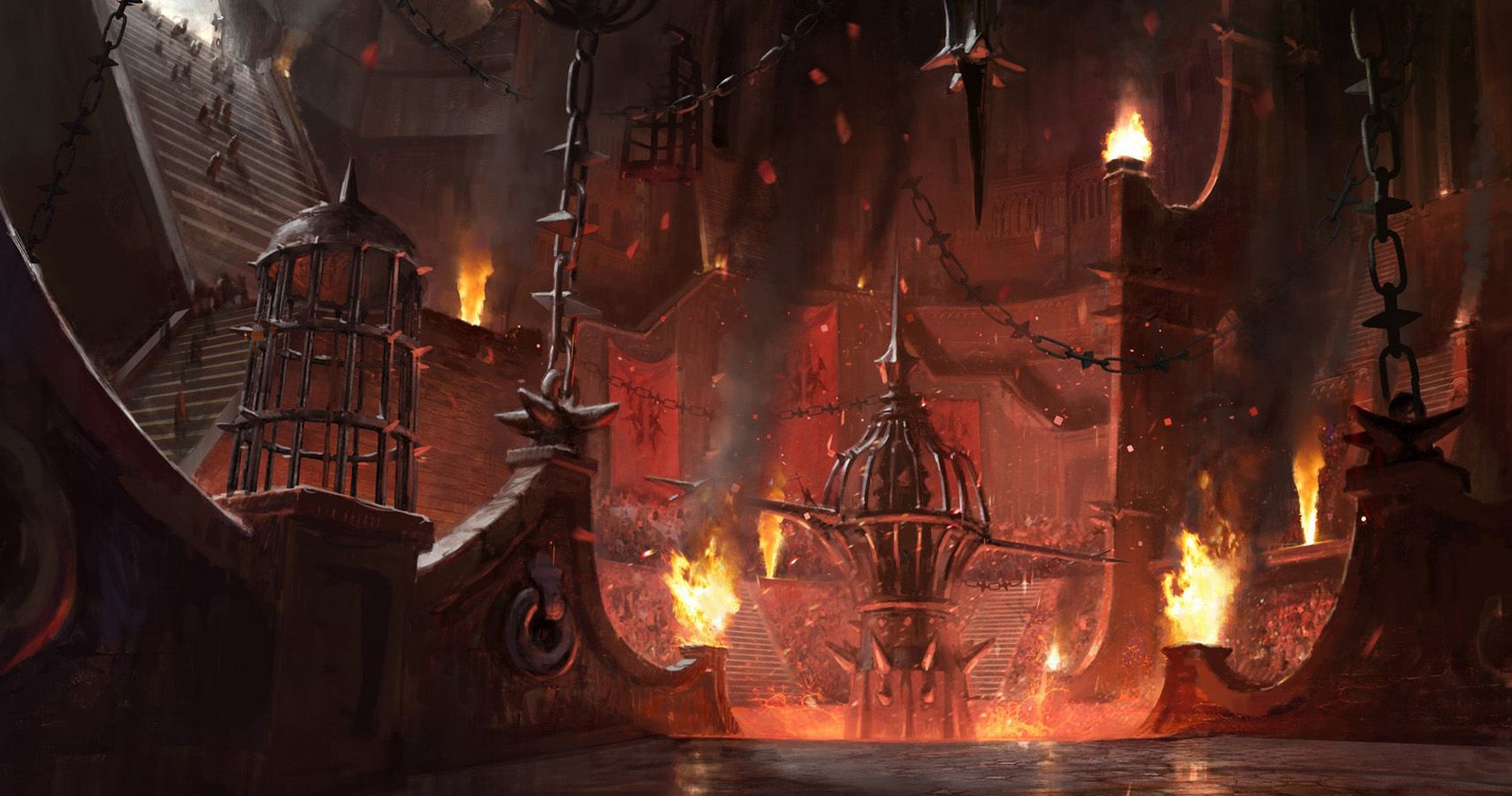
Furiously cruel and endlessly arbitrary, black and red tend to be most closely linked to demons, devils, and hell itself. The Cult of Rakdos on Ravnica, Immersturm on Kaldheim and the thunder dragon Kolaghan on Tarkir all represent different aspects of black and red.
Red is the colour of impulsive passion, and black is the colour of power by any means. When put together, each colour's chaotic and cruel aspects are dialled up. This is probably best shown in the Hellbent mechanic gives you bonuses if you have no more cards left in your hand after playing it – Rakdos doesn't care about the future, just that it's having a good time now.
If it leans more towards the black side, though, black and red can also be very decadent. Both colours like to make lots of treasure tokens through cards like Dockside Extortionist and Revel in Riches. It's also happy to steal other players' permanents, just because it likes to have things. That desire can be short-lived though, as it's also the colour pair most willing to sacrifice its assets if it means a short-term gain.
Black and red's fury does mean it can easily run out of steam. If there's nothing to sacrifice or nothing to steal, there's a chance it could stop being as big of a threat.
Red and Green
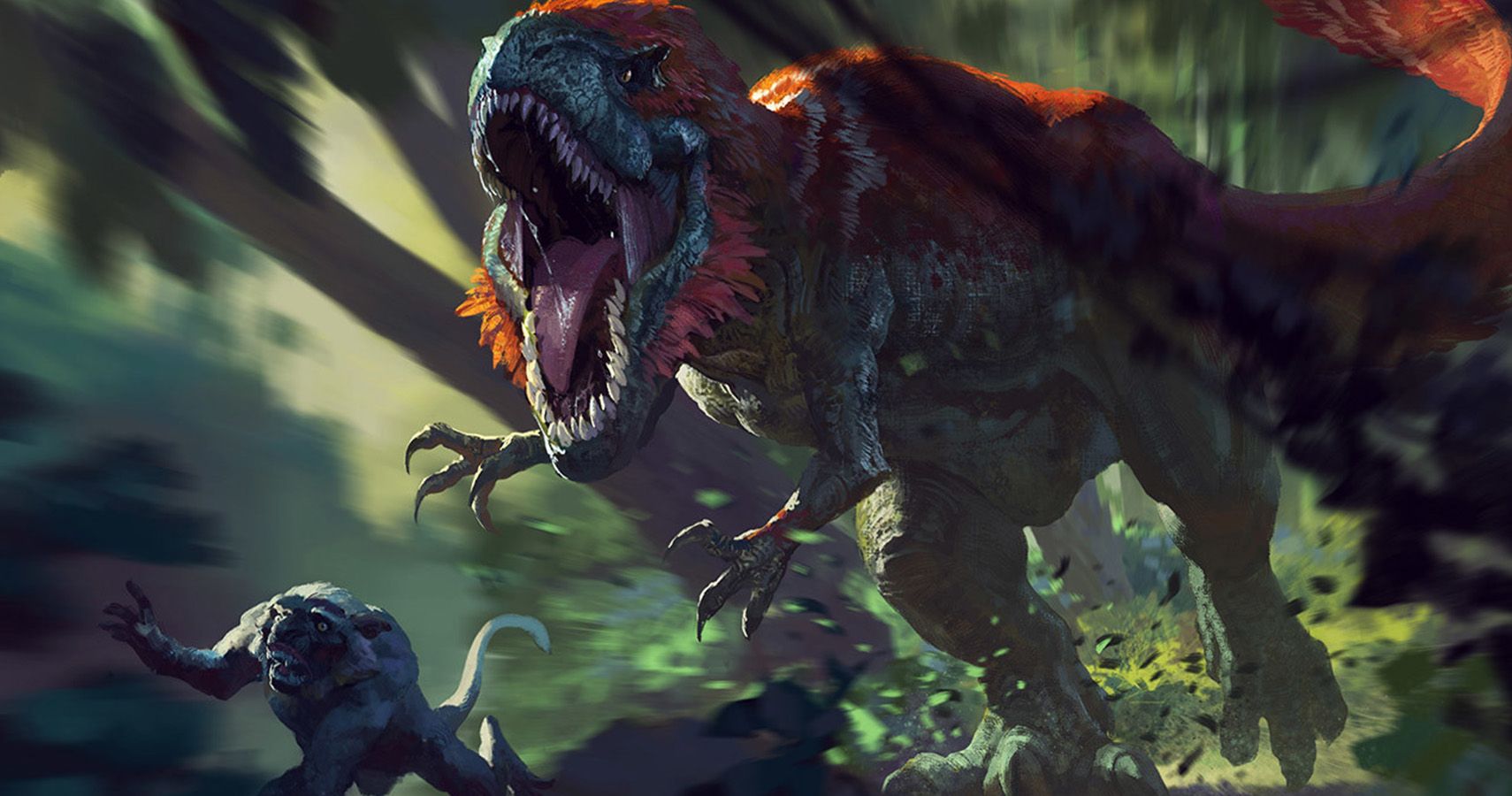
In a lot of ways, red and green are the simplest of the colour pairs. Red's passion and green's emphasis on nature make the two the colours of raw, bestial instinct. There's no care for society or knowledge, it's all about the hunt.
The Gruul Clans of Ravnica were once the protectors of the Plane's nature before it was all taken over by the ever-expanding city. Now, they trawl through the streets, destroying entire districts and taking any resources they can find before moving on. In Innistrad, red and green are the colours of werewolves, taken over by the beast within them and looking for new prey to hunt.
Red and green is a very combat-centric colour pairing, often utilising big creatures to smash through any of the other colours' defences. While mono-red is happy to make lots of little tokens, with green's addition of Trample to the mix it tends to lean more towards having a few, big, difficult to deal with creatures. It's also happy to burn out its creatures if it makes others hit harder, such as with the Bloodrush mechanic that lets you discard a creature for a certain buff.
Red and green's biggest weakness is its emphasis on Might is Right. If an opponent has a bigger creature or anything that stops combat from happening, it struggles to regain its momentum.
Green and White
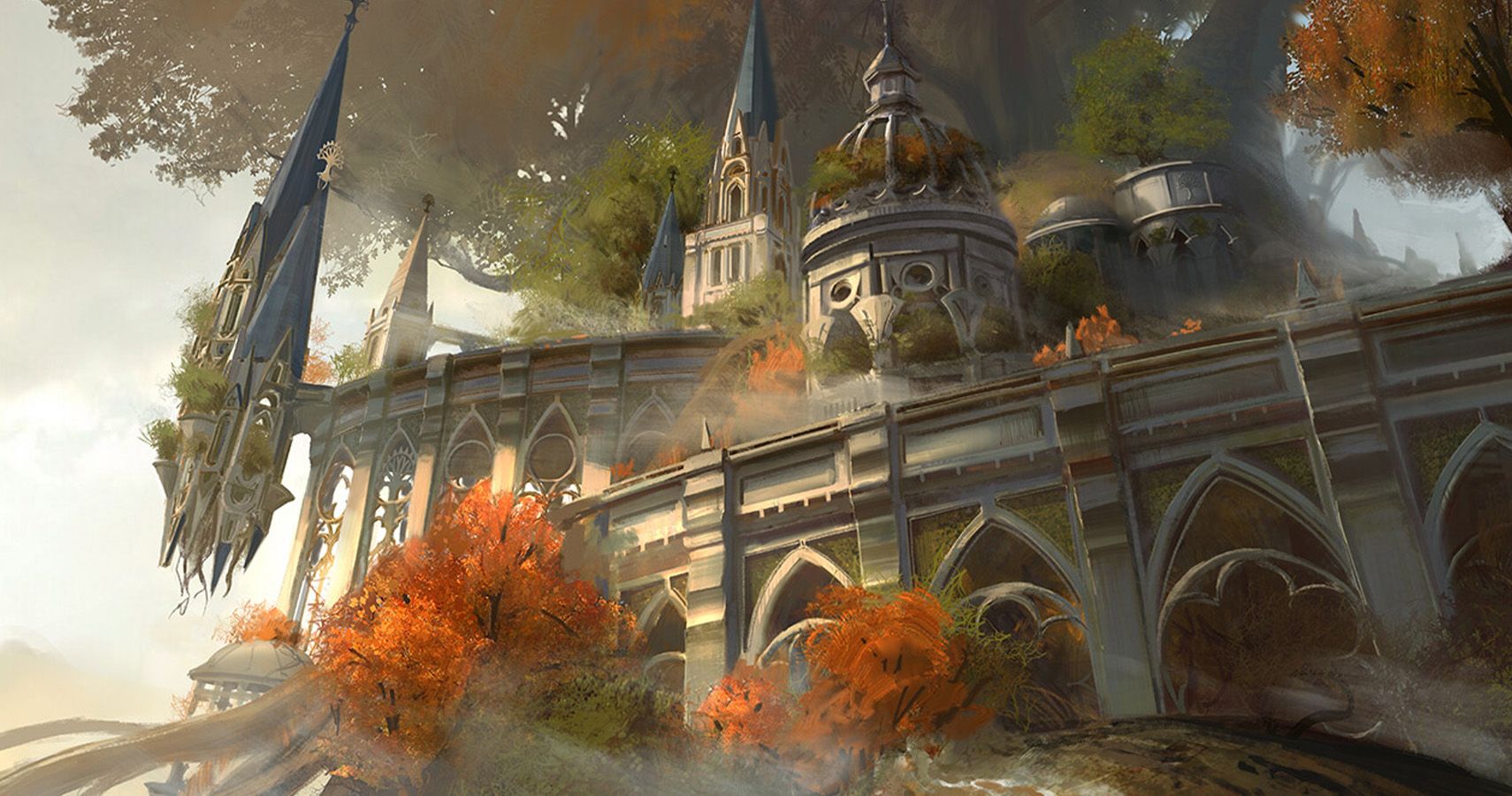
Green's nurturing and white's societal focus makes it probably the colour pair closest to achieving perfect harmony. Both Ravnica's Selesnya Conclave and Tarkir's elder dragon Dromoka are defined by their kindness, nurturing their followers no matter how big or little they are.
When put together, white and green strive for the entire community to grow together. Both creature tokens and +1/+1 counters decks do remarkably well in these colours, thanks to cards like Trostani, Selesnya's Voice, or Hamza, Guardian of Arashin. Populate, proliferate and convoke are all mechanics that rely on either making your board have a lot of creatures, or making them all bigger.
The downside to green and white is that it's the colour most associated with maintaining the status quo. White loves society, but green loves very gradual growth as part of the natural order – its strategies work, so it's going to keep doing it with little in the way of flexibility. If anything shuts down a green and white deck's strategies, such as countering a key piece or preventing an attack, there isn't much it can do about it.
White and Black
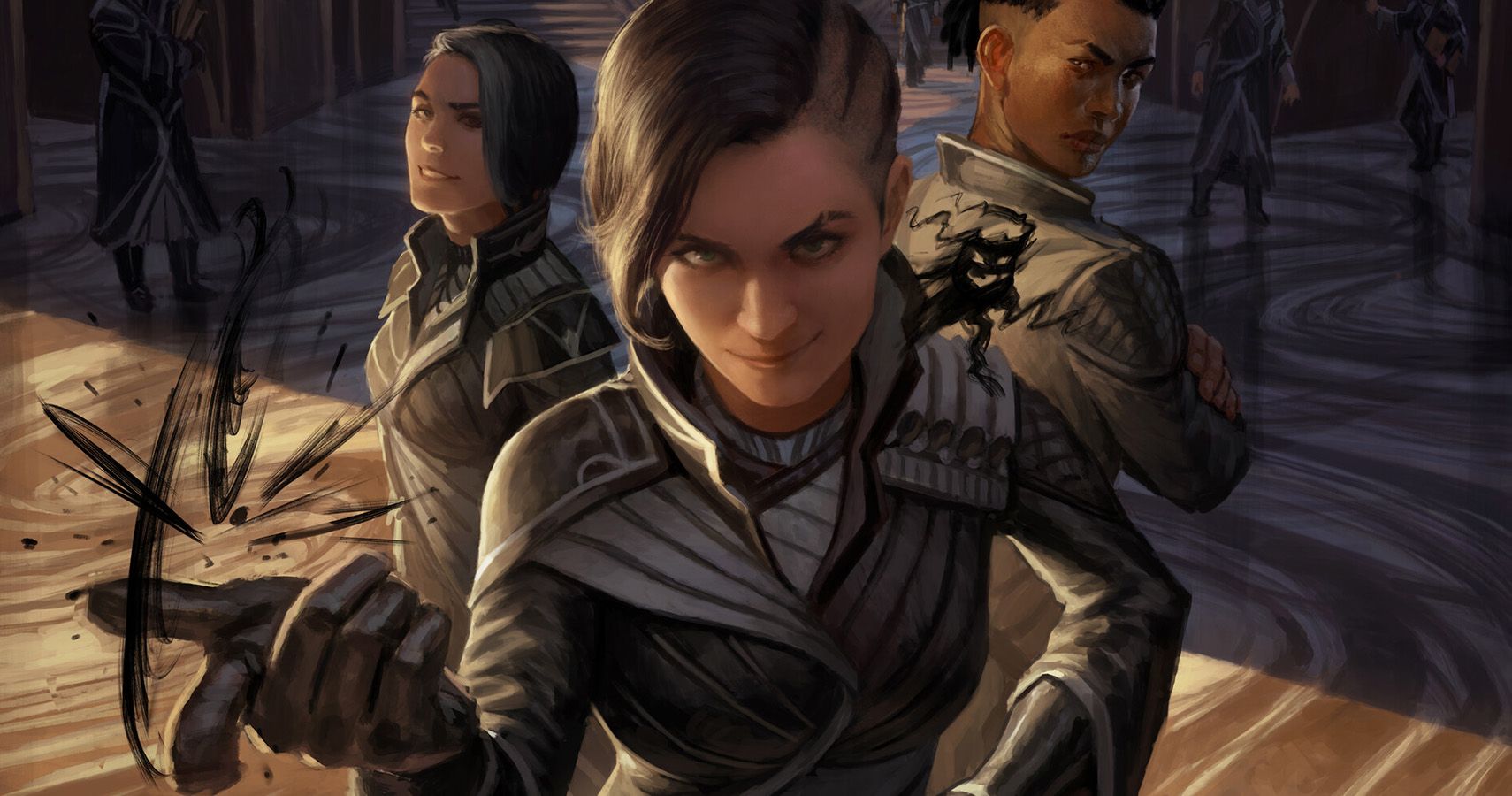
Take white's focus on structure and hierarchy and add in some of black's drive for power and control, and the result is what the white and black enemy colour pair represents: corruption and oppression.
This can range from the grand scale of the organised crime and religious extortion of Ravnica's Orzhov Syndicate and the aristocracy of Ixlan's vampiric Legion of Dusk to the smaller, pettier squabbles like the harsh-talking bullies of Strixhaven's Silverquill college. As long as there is a social pecking order, a white and black player wants to be on the top of it.
This is best represented through white and black's strongest strategy: 'stax'. Stax decks are all about deciding what your opponents can and can't do. Ghostly Prison, Blind Obedience, Kambal, Consul of Allocation, Aven Mindcensor, Deadening Silence, Opposition Agent, anything that either taxes or prevents your opponent from playing the game is Stax.
Just like its constituent parts, it's easy to see white and black and assume it automatically means evil. However, while black uses white's structure for power, white equally uses black's willingness to do anything as a tool to build a community. White tempers black's sacrificial tendencies, with lots of cards that encourage you to build big and wide, such as Elesh Norn, Grand Cenobite, and Heliod, Sun Crowned. Lifelink is abundant in both colours, turning black into a less self-destructive colour and more just a tool to reinforce white's vision of the world.
One of the colour pair's biggest problems is that it can frequently be too oppressive, and put a large target on your back. This is particularly pertinent in Commander, where the three other players may gang up to knock you down a peg if you get too oppressive. Unless you can gain unquestioned authority over the table, you'll likely have to play a bit more politics than in other colours.
Blue and Red
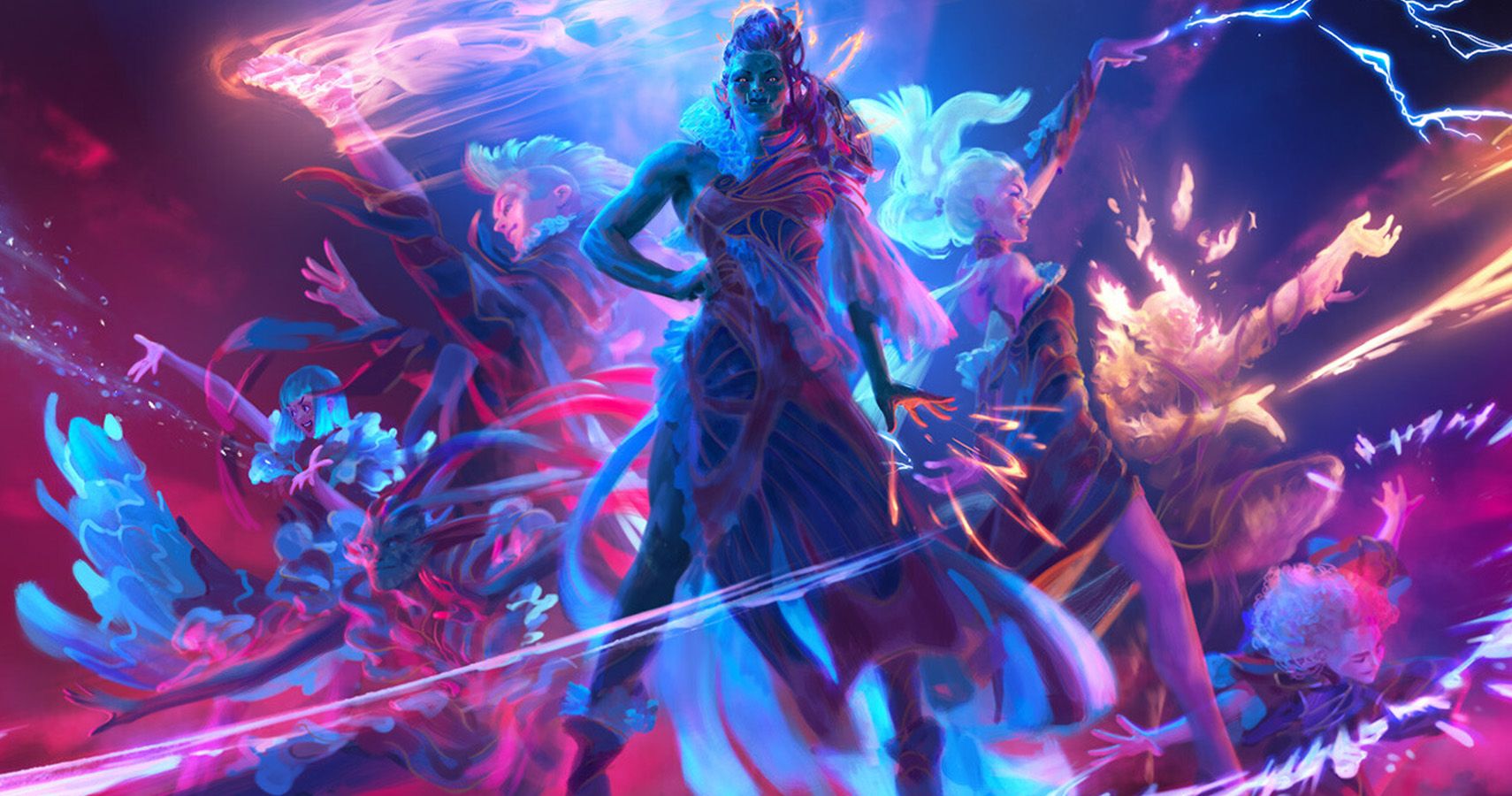
Obsessive, brilliant, and frenetic in equal parts, blue and red is all about pursuing your whims to their logical conclusion. The Izzet League in Ravnica is a guild of genius inventors who are just as likely to blow up a district as they are to help the people, and Strixhaven's Prismari college is all about using a student's pure elemental magic to create explosive works of art.
When together, red reigns back blue's controlling aspects, while blue lends its knowledge and skills to make the popular 'spellslinger' archetype. Instants and sorceries are blue and red's thing, and often it's more the casting of a spell that it cares about over it actually resolving. There are lots of on-cast triggers in the Izzet colours, such as on Spellgorger Weird.
Red and blue also have a habit of ramping each other up into bigger, more explosive things. Overload is a defining Izzet mechanic that lets cards like Cyclonic Rift change from targeting only one thing to targeting everything it possibly can.
However, one of the problems of blue and red is that it struggles to commit to anything. After all, why settle when there's something new to do? Its focus on instants and sorceries can sometimes come at the cost of having a board state comparable to other colours. The Jump-start mechanic, which lets you discard a card to cast a spell from your graveyard, is also indicative of this, as an Izzet player may be discarding something that helps them later for an immediate benefit right now.
Black and Green
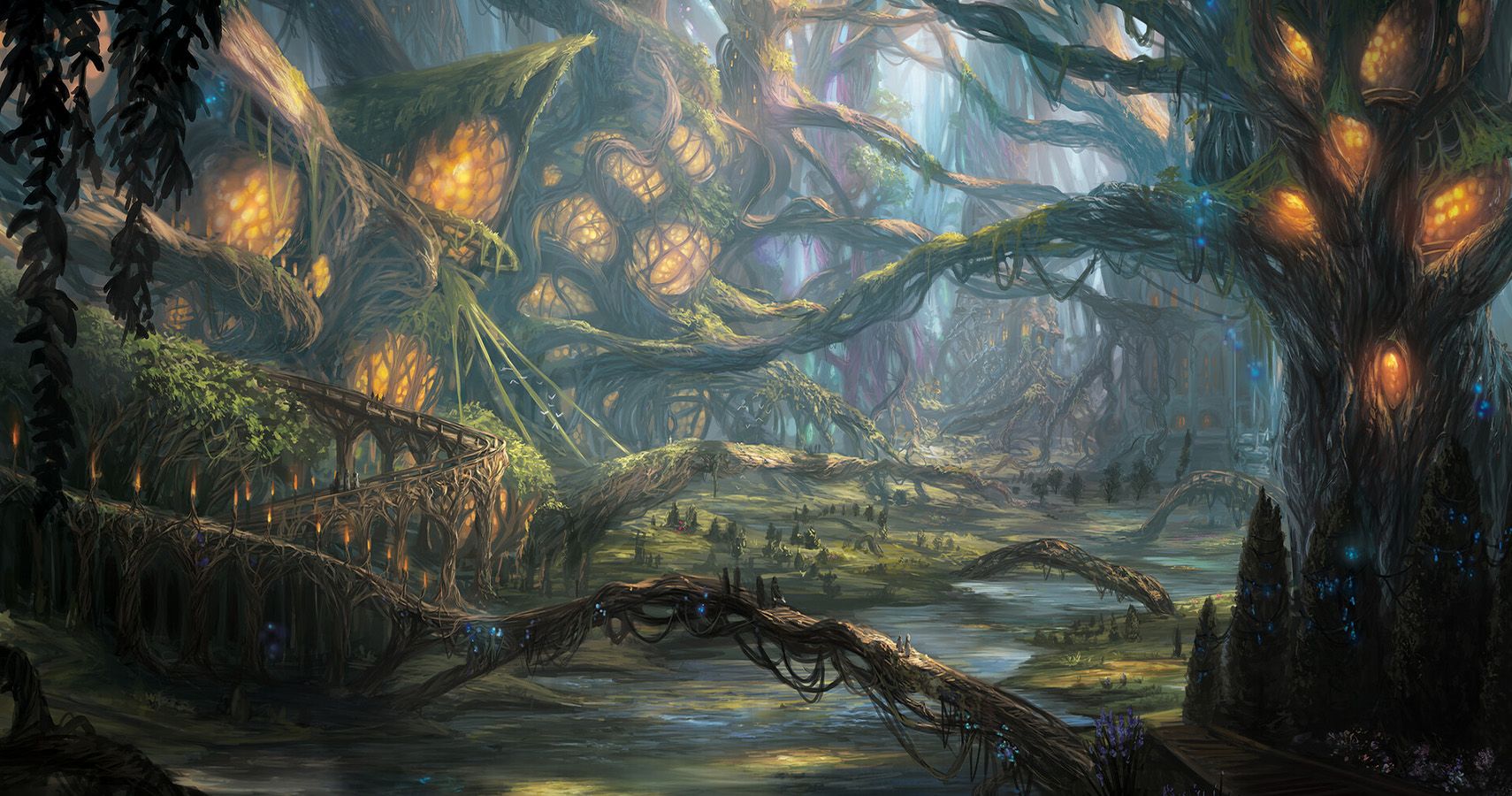
The life cycle is central to black and green's conflict. While green sees death as a natural part of life to be respected, black sees it simultaneously as another tool to use, and its ultimate enemy to escape from.
While the Golgari Swarm on Ravnica and the Witherbloom College in Strixhaven are both black and green, and do similar things mechanically, their philosophies are very different. The Golgari see life and death as natural facts of life, but also crucially see little difference between that which is alive and that which is dead. Dead things may be used to both fertilise the crops and tend to them as zombies.
Meanwhile, in Strixhaven, there is much more contention between the two colours. Lifeforce energy is in a constant game of tug-of-war between the two colours: where green seeks to respect life energies to grow and nurture, black uses the lack of it to power necromantic magics. Both work together, one supplies the life energy for the other to harvest, but it isn't quite as comfortable a cycle as the blurred lines of the Golgari.
In practice, black and green make for excellent graveyard decks. Sometimes that comes as using the dead to power the living, such as with Llanowar Abomination or Jarad, Golgari Lichlord. Other times, it can come from reanimator cards like Reanimate, Diregraf Rebirth, or Eternal Witness.
Black and green's weakness is that it needs the dead for its plans to work. If you can knock out their graveyard through something like a Tormod's Crypt or a Dennick, Pious Apprentice, their main resource is cut off.
Red and White
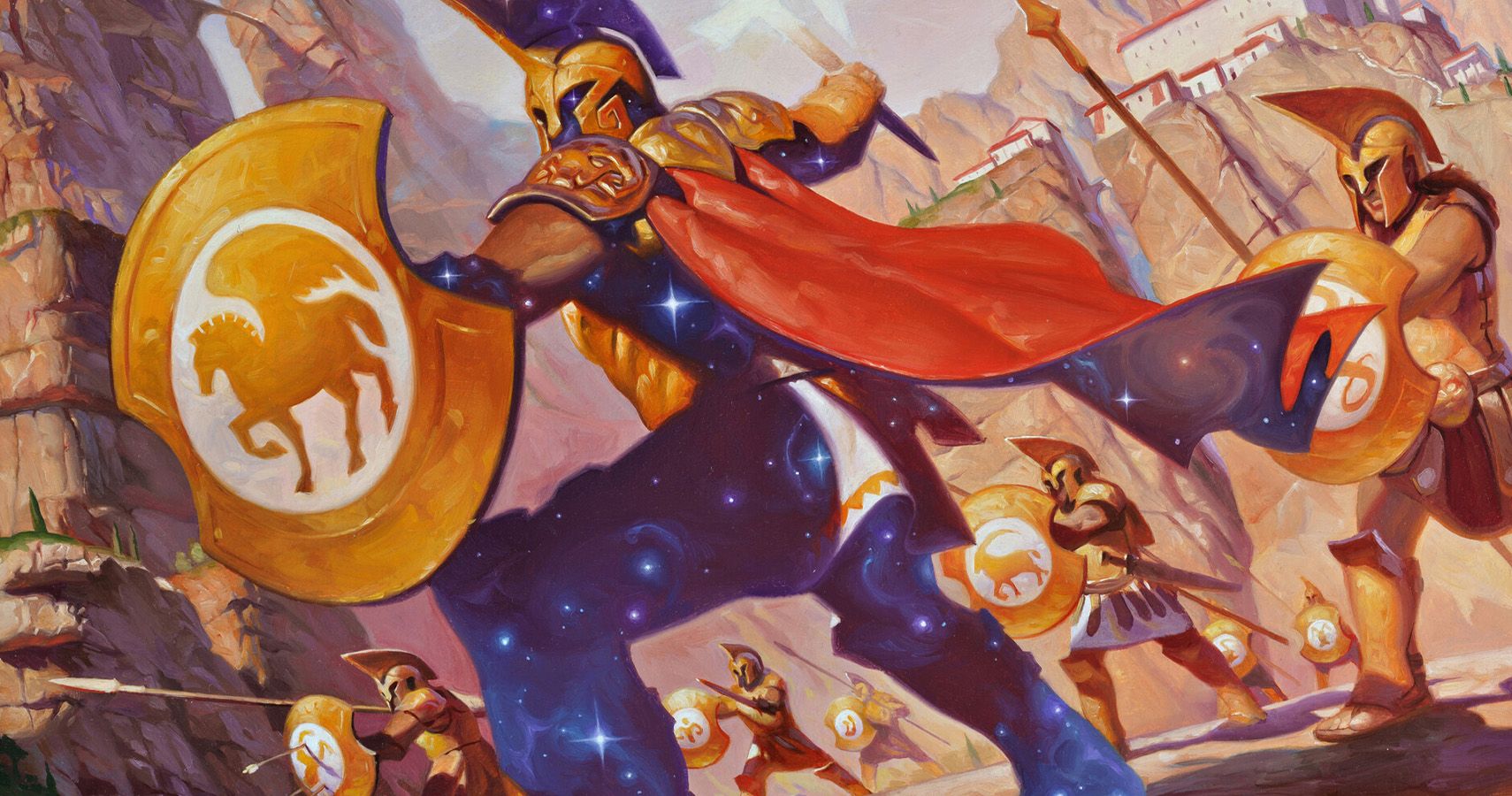
Red and white represent the passionate desire to protect something you hold dear.
That can manifest in a few different ways, and it's the colour pair that differs greatest between Ravnica and Strixhaven. In Ravnica, the red and white guild is the militaristic Boros Legion. Soldiers and guardians, the Boros value the everyday, law-abiding citizen of Ravnica. They take a much more on-the-ground approach to management than the more nebulous ideals-driven Azorius, preferring direct action over anything else. On the other hand, Strixhaven's Lorehold College wants to protect and commemorate the past through its archaeological works, aiming to uncover, catalogue, and protect artifacts from a long-forgotten history.
Though white does scale back red's furious impulsiveness, it does also pick up red's direct approach to achieving its goals. A very combat-heavy colour pair, the Boros Legion loves combat tracks (spells cast before damage is calculated in combat) and equipment artifacts to build up big and dangerous champions like Feather the Redeemed or Ardenn, Intrepid Archaeologist. Alternatively, the Lorehold style reveres the past through artifacts and graveyard recursion – channelling spirits and copying trinkets from days long gone with creatures like Osigir the Reconstructed or Quintorius, Field Historian.
Arguably one of the biggest problems is that red and white's focus on having a few, glorious protectors to get the job done. In an equipment-heavy 'Voltron' deck, taking down the creature all those artifacts are equipped to can completely turn off a deck.
Green and Blue
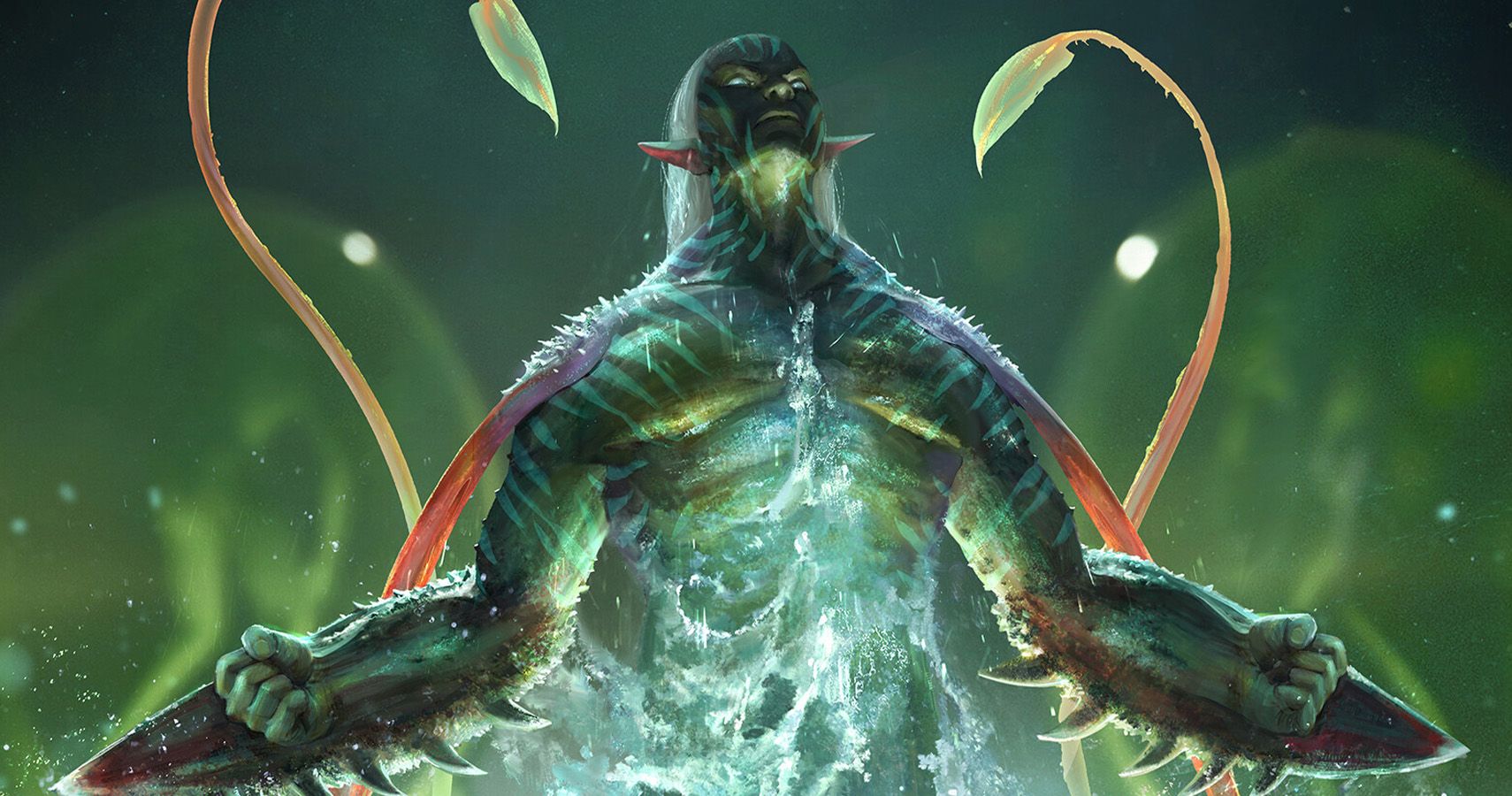
The last colour pair is also one of the weirdest.
If anything, blue and green are probably the most philosophically parasitic of all the pairings, with blue's knowledge warping green's nature in some truly bizarre ways. Blue and green are the pair of natural science, with blue seeking to not only understand nature, but also perfect it through research, selective breeding, or even genetic mutation. "What nature intended" isn't a thing as far as blue and green are concerned.
Blue uses green's propensity for consistent growth as proof that nature isn't 'finished' yet, and just needs a bit of a helping hand to reach true perfection. Ravnica's Simic Combine and Strixhaven's Quandrix both aim to understand and improve nature, whether it be through the forced evolution of the Simic or the meeting of mathematics and magic found in Quandrix's Numeromancy.
In the Magic the Gathering community, there's a reason why "Simic Doing Simic Things" is a meme. Simic is by far the best colour pairing for land ramping, with cards like Azusa, Lost but Seeking, and Aesi, Tyrant of Gyre Strait letting you play multiple lands each turn. It's the colour of big value and even bigger creatures, with both the Adapt and Evolve mechanics being defining Simic abilities that put +1/+1 counters on creatures.
Blue and green's core weakness is that, if Simic can't do those Simic things, there isn't a lot else it can do. Blue's obsession with perfecting nature leaves these decks pretty penned into their strategies. For example, a Jadzi, Oracle of Arcavios Quandrix combo deck can be completely derailed with just one well-timed counterspell, and will massively struggle to pick up the pieces.
Source: https://www.thegamer.com/magic-the-gathering-color-pair-explainer-guide/
0 Response to "Mtg Things That Both Blue and Black Do"
Post a Comment